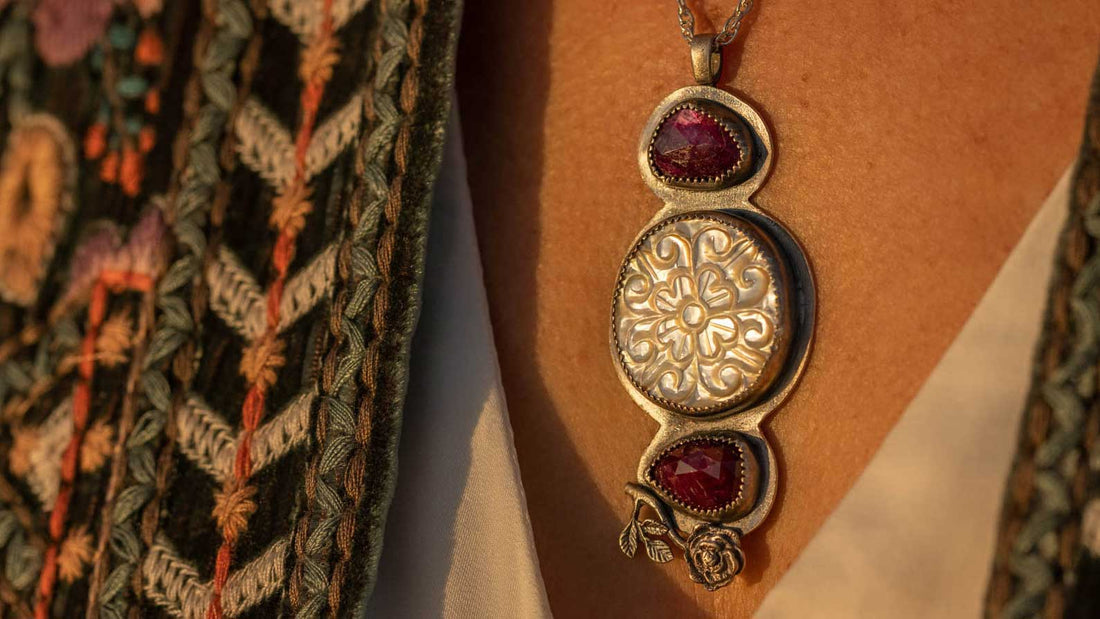Silver has captivated humanity for centuries with its radiant luster and versatile uses. Beyond its aesthetic appeal, this precious metal boasts a rich history and intriguing properties. In this blog post, we’ll explore five fun facts about silver, including the difference between sterling silver and fine silver, and the advantages of each. We’ll also discuss the value of silver throughout history, and the difference between fine and sterling silver.

1. Ancient Roots:
Silver’s history dates back to ancient civilizations. It was first mined around 3000 BC in what is now Turkey. The Egyptians, Greeks, and Romans all valued silver for its beauty and antibacterial properties. It was even used to purify water and preserve food.
2. Silver is Antibacterial:
One fascinating property of silver is its natural antibacterial qualities. In ancient times, people placed silver coins in containers to keep water fresh and prevent bacterial growth. Today, silver nanoparticles are used in medical settings to create antibacterial coatings for equipment and dressings. This makes silver not just a precious metal but also a valuable tool in healthcare.
3. Silver has high conductivity:
Silver is one of the best thermal conductors among all metals. It has excellent heat transfer properties, which is why it’s often used in applications where efficient heat dissipation is essential. Silver is commonly found in electrical contacts, semiconductors, and even in high-performance computing where it helps dissipate heat generated by electronic components.
4. Silver in Photography:
Silver has played a crucial role in the history of photography. In the 19th and early 20th centuries, silver compounds, such as silver nitrate and silver halides, were used in photographic processes. When exposed to light, these compounds formed an image on photosensitive surfaces, making silver an essential component in early photography. This historical connection between silver and photography highlights its significance in capturing and preserving images.
5. Dental Prosthetics:
In the past, various metals, including silver, were used as a base material for dental prosthetics such as dentures and partial dentures. However, these metals were typically covered with materials like porcelain or acrylic to create the appearance of natural teeth. Silver was chosen for its strength and malleability, making it suitable for crafting the framework of dental prosthetics.
Has Silver Ever Been Valued More Than Gold?
Yes, at various points in history, silver has been considered more valuable than gold. The relative value of silver and gold has fluctuated over time due to a variety of factors, including availability, demand, and economic conditions. Here are a few instances in which silver was highly prized and sometimes considered more valuable than gold:

1. Ancient Civilizations: In some ancient civilizations, such as Egypt and Greece, silver was highly regarded and considered more precious than gold. This was partly due to the rarity of silver compared to gold in certain regions and periods.
2. Roman Empire: During the Roman Empire, silver was widely used for currency, including the denarius, which was a silver coin. At times, the Roman government devalued the denarius by reducing its silver content, indicating the value placed on the metal.
3. Spain’s American Colonies: In the 16th century, when Spanish conquistadors brought vast amounts of silver from the Americas to Europe, silver briefly became more valuable than gold. This influx of silver is known as the “Silver Age” and had a significant impact on the global economy.
4. Industrial Revolution: During the Industrial Revolution, silver gained importance due to its use in various industrial applications. This increased demand for silver contributed to its perceived value.
5. 19th Century America: In the United States during the 19th century, silver played a prominent role in monetary systems. The Coinage Act of 1834 increased the amount of silver in U.S. coins, reflecting the value placed on silver at that time.
It’s important to note that the relative value of silver and gold has varied greatly throughout history and across different regions. Today, gold is generally more valued and considered more precious than silver due to factors such as its rarity, stability as a store of value, and widespread use in jewelry and as a financial asset. However, silver continues to be highly regarded for its unique properties and remains a valuable and versatile metal.
Sterling Silver vs. Fine Silver
When it comes to silver jewelry and items, you’ve probably heard of both sterling silver and fine silver. But what’s the difference?
- Sterling Silver: This alloy consists of 92.5% pure silver and 7.5% copper (or another metal). The addition of copper increases the metal’s durability while retaining its elegant appearance. Sterling silver is marked with a “925” stamp. It’s an excellent choice for jewelry, as it combines beauty and strength. In the ring pictured here, the band is made of sterling silver.
-
Fine Silver: Fine silver is 99.9% pure silver, making it the purest form of silver used in jewelry and other items. Its softness, however, makes it less suitable for pieces that endure frequent wear and tear. Fine silver is typically reserved for intricate designs, collectibles, and decorative items. In this ring, the bezel around the stone is made of fine silver.
Advantages of Sterling Silver
- Durability: Sterling silver’s alloy composition makes it more durable than fine silver. This makes it ideal for jewelry like rings and bracelets that experience daily wear and tear.
- Affordability: Sterling silver offers an attractive balance between quality and price. It’s more affordable than fine silver or other precious metals like gold or platinum.
- Easy Maintenance: It’s easy to clean and maintain sterling silver with regular polishing, ensuring your jewelry stays gleaming for years.
-
Advantages of Fine Silver
- Purity: Fine silver’s purity makes it ideal for intricate, delicate jewelry designs. It’s also a preferred choice for collectors and investors who value the metal’s intrinsic worth.
- Hypoallergenic: Some people with metal allergies find fine silver to be a better choice due to its high purity, reducing the risk of skin reactions.
- Tarnish Resistance: Fine silver is less prone to tarnishing compared to sterling silver due to its lack of copper content. This means less time spent on polishing and maintenance.
What is the best way to clean silver?
There’s no doubt, silver continues to be greatly valued, especially in jewelry. But what is the best way to clean your silver jewelry?
Cleaning silver is a straightforward process, and there are several methods you can use depending on the level of tarnish and the items you’re cleaning. Here’s a general guide on how to clean silver effectively:
Materials You’ll Need:
- Mild dish soap
- Warm water
- Soft-bristle toothbrush or a silver cleaning brush
- Microfiber or soft, lint-free cloth
- Silver polish (I recommend Wright's silver cream)

Steps to Clean Silver:
-
Create a Cleaning Solution:
- Fill a basin or bowl with warm water.
- Add a few drops of mild dish soap to the water. Avoid using harsh detergents that could damage the silver.
-
Soak the Silver:
- Place the tarnished silver items into the soapy water.
- Let them soak for about 5 to 10 minutes. This helps to loosen the tarnish.
-
Gently Clean the Silver:
- Use a soft-bristle toothbrush or a silver cleaning brush to gently scrub the tarnished areas. Be careful not to use excessive force, as this could scratch the silver.
- Pay special attention to intricate details or crevices where tarnish may accumulate.
-
Rinse Thoroughly:
- Rinse the silver items thoroughly under warm running water to remove all soap residue.
-
Dry the Silver:
- Pat the silver dry with a soft, lint-free cloth to avoid water spots. Make sure it’s completely dry.
-
Polish (Optional):
- If your silver items still appear tarnished after cleaning, you can use a silver polish. This is my favorite silver polish. Be sure to follow the manufacturer’s instructions when using any commercial silver polish.
- Apply the polish with a soft cloth, rubbing gently in a circular motion.
- Buff the silver to a shine with a clean part of the cloth.
Tips for Maintaining Silver:
- To prevent tarnish, store silver items in a cool, dry place away from direct sunlight and moisture.
- Use anti-tarnish strips or pouches in your storage to absorb moisture and prevent tarnish.
- Avoid contact between silver and materials like rubber bands, certain papers, or cardboard, as they can accelerate tarnishing.
Remember that some silver items may have a protective coating or patina that you should preserve, so always check for specific cleaning instructions from the manufacturer or silversmith if you’re unsure. Regular cleaning and proper storage will help keep your silver items looking their best.
In a world filled with trends that come and go, there’s something enduring and enchanting about silver jewelry. Its timeless luster, versatility, and rich history make it a treasure worth wearing. As you’ve learned about the fascinating aspects of silver in this blog post, we invite you to explore our exquisite collection of silver jewelry.
Visit our online store now and discover the world of silver jewelry waiting for you. Indulge in the allure of silver’s timeless charm, and make a statement that transcends fashion trends. Embrace the elegance, durability, and versatility of silver jewelry, and let it become a cherished part of your own story.


